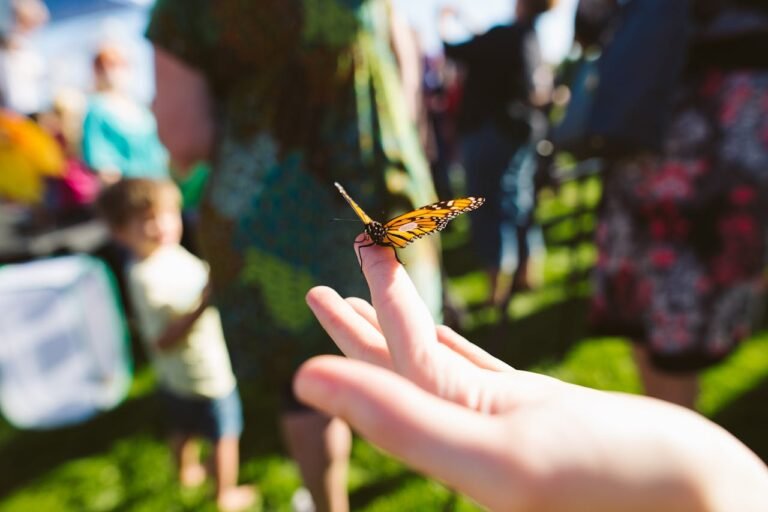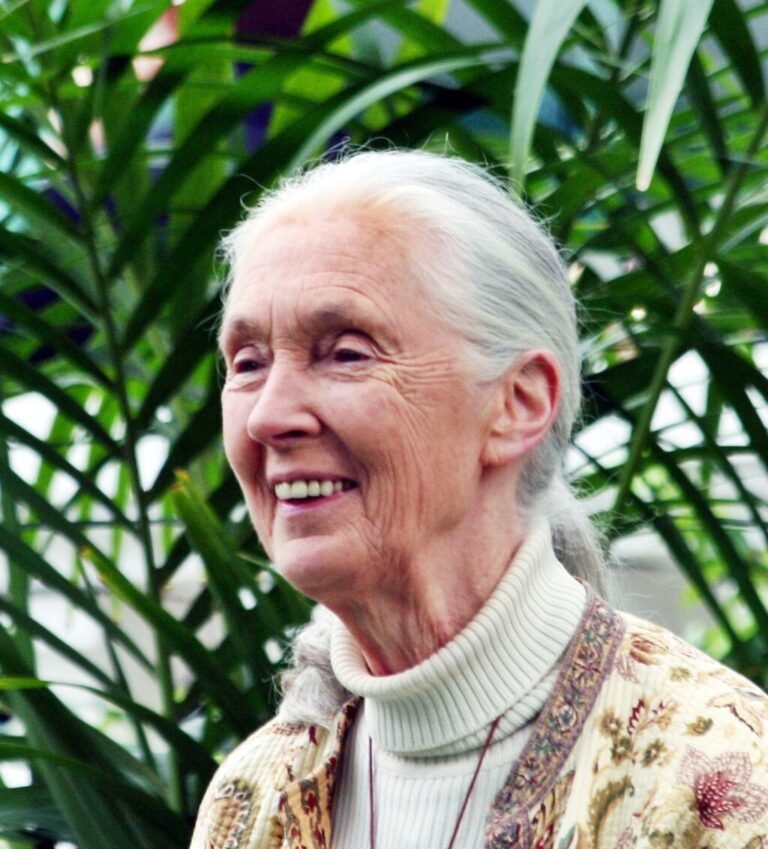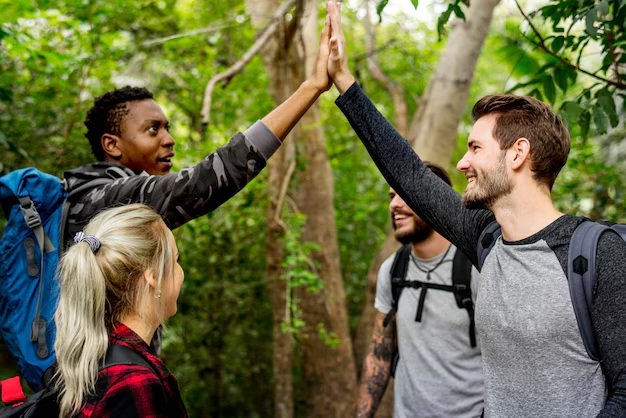Voluntourism Ethics: Do Conservation Trips Help or Harm Wildlife?
Wildlife conservation voluntourism is a rapidly growing industry, offering travellers the opportunity to contribute to environmental preservation while exploring new destinations. This sector has gained significant traction, with millions of individuals participating annually in various conservation projects worldwide.
However, the ethical implications of voluntourism have come under scrutiny. Critics argue that short-term, untrained volunteers may inadvertently cause more harm than good. Studies have shown that such volunteers can place additional burdens on local conservation teams, who must spend valuable time training or correcting mistakes, potentially undermining the effectiveness of ongoing projects. Moreover, the influx of volunteers can create dependency loops, where communities rely on external assistance rather than developing sustainable, local solutions.
One of the most concerning issues within wildlife voluntourism is the commercialisation of conservation experiences. In some regions, wildlife sanctuaries and rescue centres may prioritise the satisfaction of paying volunteers over the actual needs of the animals. This can lead to inappropriate interactions—such as handling wild animals for photo opportunities—that stress or even harm the animals involved. Rather than supporting true rehabilitation or conservation, these experiences may exploit wildlife under the guise of education or care.
Despite these challenges, when executed ethically, voluntourism can yield positive outcomes. Community-led conservation initiatives have demonstrated success by integrating local knowledge and fostering long-term stewardship of natural resources. For instance, community-run conservancies in Africa have been effective in wildlife conservation, sometimes outperforming national parks. These models emphasise collaboration, sustainable livelihoods, and respect for indigenous practices.
In the following sections, we’ll take a clear look at the complexities of wildlife conservation voluntourism. We aim to provide a comprehensive understanding of how travellers can engage in meaningful conservation efforts without inadvertently causing harm.

What Is Ethical Voluntourism?
Ethical voluntourism is all about empowering local communities, reducing harm, and creating conservation gains that last long after volunteers leave. It puts local leadership front and centre—projects designed and run by people who live there, not outsiders parachuted in. It’s a community-driven approach grounded in scientific best practices and full transparency—clear measures of impact and open books on finances. Volunteers are taught the how and why behind their work, not just handed a shovel, so they leave more informed than when they arrived. And most importantly, animals aren’t treated like props for photos; their well-being guides every decision.
Take sea turtle conservation in Costa Rica, for example. At the Ostional Wildlife Refuge—actually part of a national wildlife refuge established in the 1980s—local experts lead programs where volunteers monitor nests and collect data under strict guidelines to avoid stressing turtles. This community-based model, backed by scientific protocols, matches the ethical principles above. Programs like the Latin American Sea Turtles project also partner with local biologists to tag turtles for long‑term research, rescue injured individuals, and restore mangroves. By combining science, community action, education, and animal welfare, these programs help turtle populations grow year after year. That’s ethical voluntourism in action.
How Conservation Voluntourism Can Harm Wildlife
Despite good intentions, many conservation trips cause unintended harm. Common issues include:
1. Stress and Disturbance to Animals
Even the most unsuspecting visit can disrupt animal behaviour. Imagine sea turtle hatchlings: volunteers crowd around nests, unintentionally panicking the tiny creatures during critical early moments. A study examining several volunteer programs found a statistically significant link between volunteer activity and reduced nest success, showing that human presence, even in good faith, can disrupt feeding and nesting patterns by wildlife.
The issue worsens when volunteers, lacking the training of wildlife experts, handle animals. A gentle touch meant to comfort an orphaned bird or mammal can easily break a fragile wing or cause long-term behavioural problems. These interactions may feel rewarding, but often harm animals more than help them.
2. Habituation and Human Imprinting
Some programs—especially for orphaned primates or baby big cats—teach animals to bond with humans. Volunteers bottle-feed these creatures, sometimes several times a day. Over time, animals learn to associate people with food and comfort. That “cute” behaviour may win hearts, but it’s a tragic roadblock to survival in the wild.
Lion cubs are especially vulnerable. A 2022 analysis of tourist-lion interactions found that 61% of cubs were under three months old, with instances of infants just days old being handled constantly, never seeing their mothers, and exhibiting stress behaviours like aggression and avoidance. Once habituated, these animals lose their survival instincts, cannot fend for themselves, and—even worse—become magnets for exploitative industries.
3. Commercial Exploitation Masquerading as Conservation
This is where empathy becomes a powerful trap. Facilities breed lion cubs—or sometimes tigers—specifically to attract volunteers and tourists with photo opportunities, all under the guise of “rehabilitation.” The interaction may feel meaningful, but the cubs often remain trapped in a lifelong cycle of captivity.
Research highlights the extent of this exploitation. Cub-petting centres often use comforting terms like “rescued orphans,” even though many of these animals are bred purely for tourism. Volunteers may pay up to $3,000 for a two-week placement, generating as much as $100,000 in revenue each month.
After the tours end, life takes a dark turn for many lion cubs. Some are sold into the trophy hunting industry, others into the exotic pet trade, or kept for their bones and body parts. A UN-linked report and multiple conservation organisations have revealed that captive lion breeding contributes little to real conservation. Instead, it often feeds into canned hunts, the illegal wildlife trade, and unethical tourism practices.
Leading conservation groups, including the International Union for Conservation of Nature (IUCN) and Panthera, have stated that captive breeding of lions is driven by commercial profit, not genuine wildlife protection. In fact, South Africa announced in 2024 that it would begin phasing out its controversial captive lion breeding industry, citing reputational damage, poor animal welfare, and the absence of conservation value.
Conservation experts overwhelmingly agree: captive lion breeding is not conservation—it’s commerce.
4. Short‑Termism
Voluntourism often centres on short stints: two to four weeks is typical. But true conservation is a marathon, not a sprint. Wildlife populations take years, even decades, to recover.
Constant volunteer turnover means programs spend valuable time training newcomers, with efforts reset every few weeks. A study on Costa Rican reforestation projects, for example, noted that because volunteers stayed for such brief periods, project leaders spent more energy onboarding than achieving long-term goals.
Meanwhile, local staff, often excluded or underpaid, can lose out on stable employment opportunities. A Reddit conversation highlighted that voluntourism can depress local wages and displace skilled workers, while volunteers see themselves compensated only by experience.

Who Really Benefits? Economics of Voluntourism
Table: Comparative Revenue Distribution
| Stakeholder | % of Typical Fee (Est.) | Comments |
|---|---|---|
| International Operator | 50–70% | Covers marketing, admin, and profit margins |
| Local Community | 5–15% | Often receive informal roles and low pay |
| Conservation Project | 15–30% | Funds equipment, salaries, and ongoing research |
Many trainees assume their payments flow directly into conservation, but in reality, a large share is retained by middlemen and tour agencies. The global voluntourism industry generates approximately USD 2–3 billion annually, hosting over 10 million participants each year—a substantial scale that warrants scrutiny. Market research from Grand View and Ken Research confirms rapid growth, with the global market nearing USD 850 million in 2023 and forecast to expand at a CAGR of about 6%.
Ethical voluntourism models strive for transparency, ensuring fees are reinvested locally—funding community leadership, co-developed conservation strategies, and real capacity-building efforts. By minimising unnecessary intermediaries and centring host communities, these models aim to correct the imbalance where volunteers often benefit more than the people or wildlife they intend to help.
Red Flags: How to Identify Unethical Programs
First, watch out for animal handling for selfies or enrichment. New research confirms that any close contact—even under the pretext of animal enrichment—disrupts natural behaviour and increases demand for wildlife selfies, which can fuel illegal trafficking and stress endangered species.
Second, be cautious when programs show a lack of transparency about fee allocation. If fees are vague or the organisation won’t explain how funds reach local communities or conservation efforts, that’s a strong warning sign.
Third, a program without qualified staff or local leadership likely lacks legitimacy. Ethical projects are rooted in local expertise and leadership, not just foreign volunteers.
Fourth, if there is no long-term monitoring or published conservation outcomes, ask why. Reputable programs track wildlife populations or community benefits over time. Citizen science projects have shown that, with proper training, volunteer-collected data can genuinely support conservation.
Fifth, no screening or training of volunteers is a huge concern. Without proper prep, volunteers can unwittingly cause habitat damage or introduce diseases.
What Ethical Conservation Programs Look Like
Ethical conservation efforts begin with local leadership—they’re often co-designed and led by local and Indigenous experts who understand ecosystems best. This approach ensures respect for traditional knowledge, gives communities ownership, and leads to better, long-lasting outcomes.
These programs always partner with trusted NGOs or accredited researchers, creating a solid scientific foundation. That way, volunteers support projects guided by evidence, not guesswork.
Volunteers themselves receive proper training, and their assignments are carefully matched to their experience to reduce accidental harm. Ethical programs avoid handing out shovels to beginners and expecting miracles—they encourage gradual learning and gradual responsibility.
An essential practice is monitoring and adapting: programs report results, reflect on what works (and what doesn’t), and change course when needed. This iterative feedback loop ensures they keep delivering real conservation gains.
Animal welfare and species needs come first. No petting, no wildlife shows—only observation, in ways that respect the habitat and dignity of the animals.
Take CoralWatch in Australia and the Pacific, for example. Started by the University of Queensland, it trains volunteers to collect coral-bleaching data using a standard colour chart—no direct animal contact involved. The data is shared openly and used globally by scientists.
This model checks all ethical boxes:
- Local and Indigenous involvement in program delivery
- Partnership with science-based organisations
- Training and appropriate volunteer roles
- Transparent reporting and adaptability
- Respect for animal well‑being
Ethical programs like this don’t just feel good—they deliver long-term conservation impacts and build real trust with local communities. That’s the future of responsible voluntourism.
Actionable Advice: How to Choose (and Contribute) Ethically
- Do Your Homework
- Read honest reviews from past volunteers and look for transparency about results. Reliable programs share impact reports and testimonials.
- Investigate who’s running the show. Do they have relevant credentials in conservation or community development? Trusted programs are led by qualified locals or international experts with proven ethics.
- Ask Hard Questions
- How is wildlife welfare ensured? Ethical programs forbid volunteers from handling animals—only trained staff interact with them, reducing stress.
- Is the community actively involved in both decision-making and implementation? Co-created programs empower locals instead of displacing them.
- Where does the money go? Ethical projects clarify budgeting and ensure fees funnel into community-led initiatives, not foreign marketing.
- Consider Your Skills
- Match your expertise—like GIS mapping, veterinary care, or communications—to the program’s genuine needs. Skill-based work creates a much deeper impact than general labour.
- Support Local Conservation in Other Ways
- Donate to locally vetted NGOs.
- Advocate for conservation-focused policies or sponsor community scholarships—your commitment doesn’t have to end when the trip does.
- Stay Humble
- Volunteering is about learning, not heroism. You’ll gain more by listening, respecting cultural insights, and supporting local knowledge.
By focusing on programs grounded in local leadership, transparent funding, and long-term planning, you avoid the pitfalls of “voluntourism-as-tour” and become part of real conservation solutions.
Learn More: What is the Goal of Wildlife Conservation
Conclusion
Voluntourism in wildlife conservation isn’t inherently bad, but it’s filled with ethical complexities. When done thoughtfully, it can support local efforts, expand scientific understanding, and shift perspectives. When handled poorly, it risks turning into yet another form of eco-colonialism.
As a potential volunteer, your choices truly matter. Look beyond the glossy marketing. Ask the hard questions. Focus on creating real impact, not just following good intentions.
In the end, ethical conservation doesn’t begin in the jungle or on the savannah—it begins in our mindset. The most important species we may need to change is ourselves.







